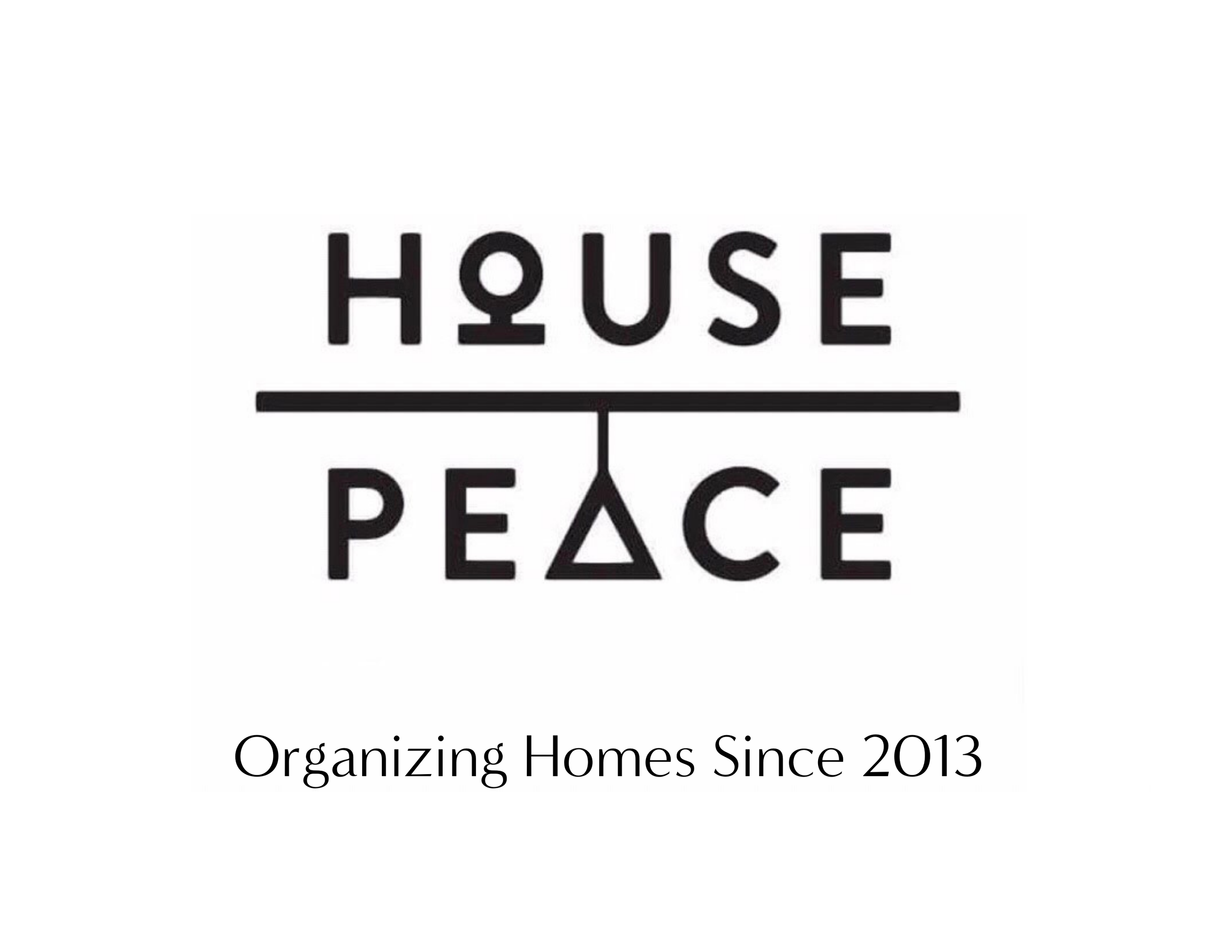Organizing Your Work
Do you ever get to the end of a day or week and wonder, “Did I use my time as wisely as I could have?” As a part-time work from home mom, I often struggle with the feeling that I could have been more productive with my day if I had just organized it a little more. I know we normally talk about organization of our physical space here, but at House Peace, we believe that true peace comes when all aspects of our lives are well-organized, including the intangible parts. This is why organizational principles can easily be transferred from something like organizing a closet to organizing a work week. Let’s walk through the steps of organizing a room, but instead of applying them to a room in your home, think through your work (whatever your work is, even if it’s unpaid because I SEE YOU, SAHMs!).
Step 1: What’s the problem to be solved?
Often with a room, we’ll notice that the drawers are too full to shut, things fall out of the cabinets when we open them, or we just can’t find what we’re looking for because nothing has a designated place. This type of chaos brings anxiety to a space, but it also brings anxiety to our minds when it’s happening outside of the physical space. Is your calendar too full? Are you dropping the ball on responsibilities? Do you have a general sense of anxiety when you think about work? When you consider work, what do you wish were different? What would bring you more peace? Identify that first so you can work on finding a solution.
Step 2: Take inventory and purge unnecessary items
If you’ve ever organized your pantry, you know exactly how this works. First you empty the cabinets and then you notice that you have multiples of things, expired items, and products that you tried and didn’t like but put back in the cabinet anyway. When you purge a pantry, a lot of items end up in the trash, and while that can sometimes feel wasteful, we like to look at this as a learning opportunity. In the same way, sometimes with our work, we have to take inventory of all that there is to do and get rid of what is not needed. Obviously there are some tasks that you would love to throw in the proverbial garbage but you can’t because they’re necessary, but maybe there are things that you’re currently doing (or telling yourself you need to be doing) that are creating clutter and, at least for this season, aren’t things that HAVE to be done. If you notice any of these, throw them in the garbage and learn from that.
Step 3: Group like-items together
In your closet, it wouldn’t make a lot of sense or aid in efficiency if you had your shoes, clothes, and accessories all combined in the same drawer or on the same shelf. In the same way, it doesn’t make a lot of sense or make your work very efficient if you’re all over the place with your tasks instead of doing similar things at the same time. In my life, that looks like running errands all on in the same morning vs going out for separate errands on different days throughout the week, or batching the content I make for House Peace on various platforms like Pinterest and LTK in one day vs doing it in drips and drabs throughout the week. It might feel like it’s “six of one, half a dozen of the other” but there’s a considerable amount of time and energy spent when we begin a new task (it took me about 5 minutes to get in the creative mindset to write this blog post) and once we’re using a certain part of our brain or body for a particular type of task, we streamline things by continuing with the same type of task instead of switching gears altogether.
Step 4: Contain and reload
An organizational principle we use regularly is to have containers for your items. This helps keep things in their place and with their friends (no applesauce pouches next to the Worcestershire sauce), and creates a boundary so that you don’t end up with too much stuff (only keep the shoes that fit on one shelf). The way we do this with our work is by putting boundaries on our work, and putting our work into our schedule where it fits best. For me, the hours between 9AM and 2PM are prime work hours. My kids are at school and this is the time of day where I have the most energy so this is the container for my work. Once similar tasks are grouped together, I place them into my calendar within the boundary I’ve set (reload). This can be trial and error and take some time to figure out, just like how it might take a few tries to get all of the items neatly in a lidded bin so that the lid closes, and that’s ok! Keep trying and you’ll figure it out.
Organization comes in many forms, and the strategies for organizing your home can and should be applied to other areas of your life. I hope these steps help you if you feel like your work life could use a little Chaos Resilience, and as always, we’re here to help. Feel free to reach out on Instagram with questions about organizing your work.
All the best,
— Colleen
PS. You can get to know me and my family a little more here!

